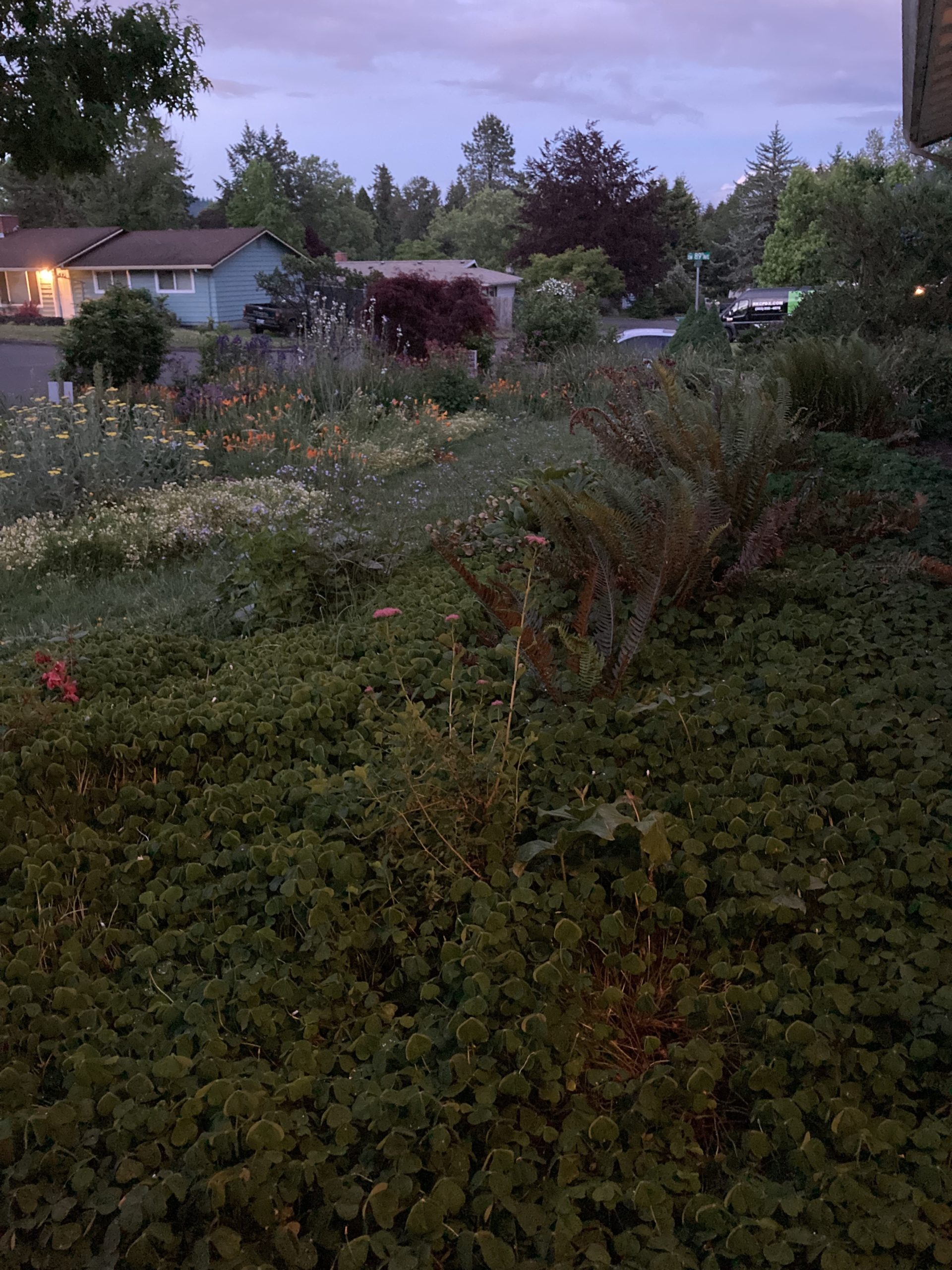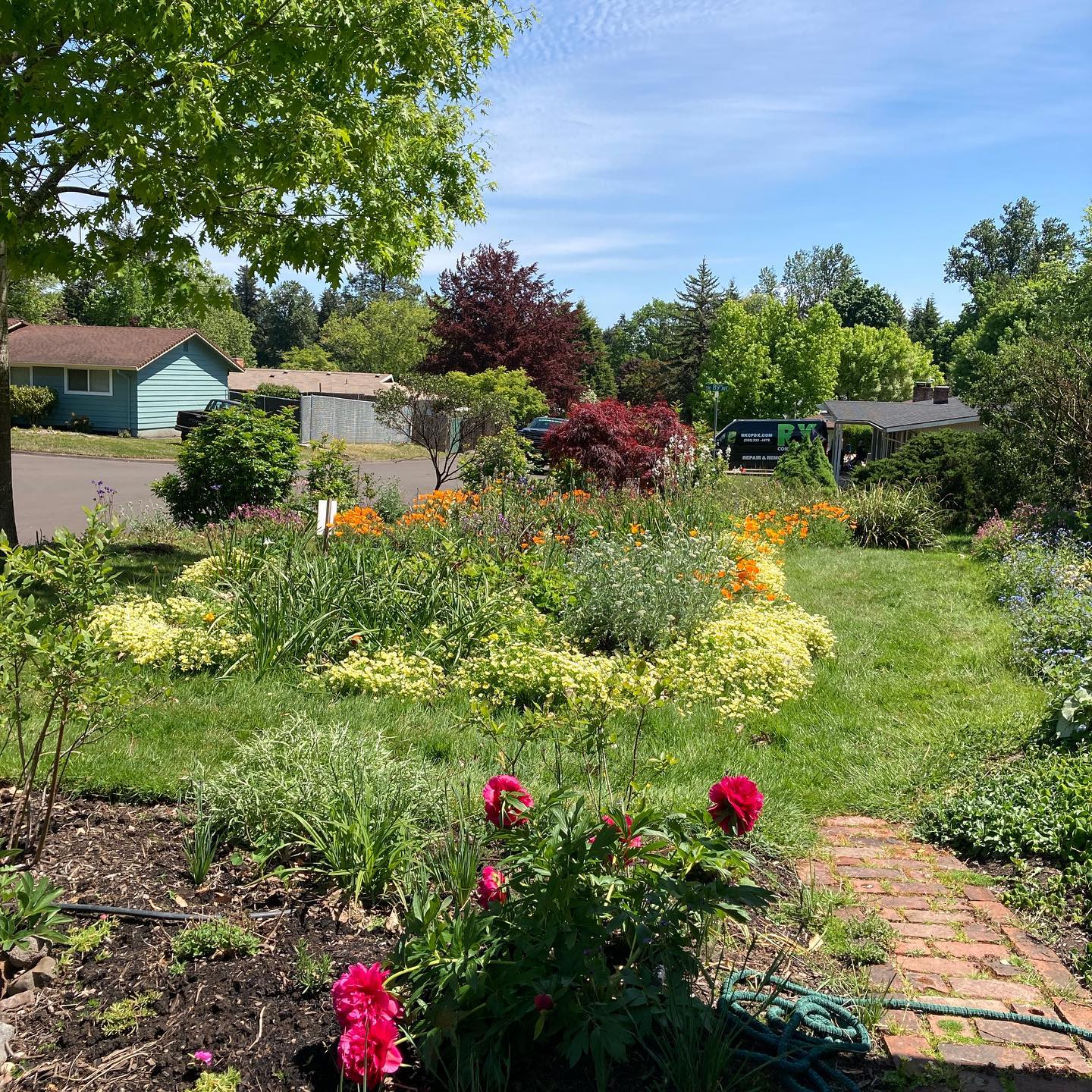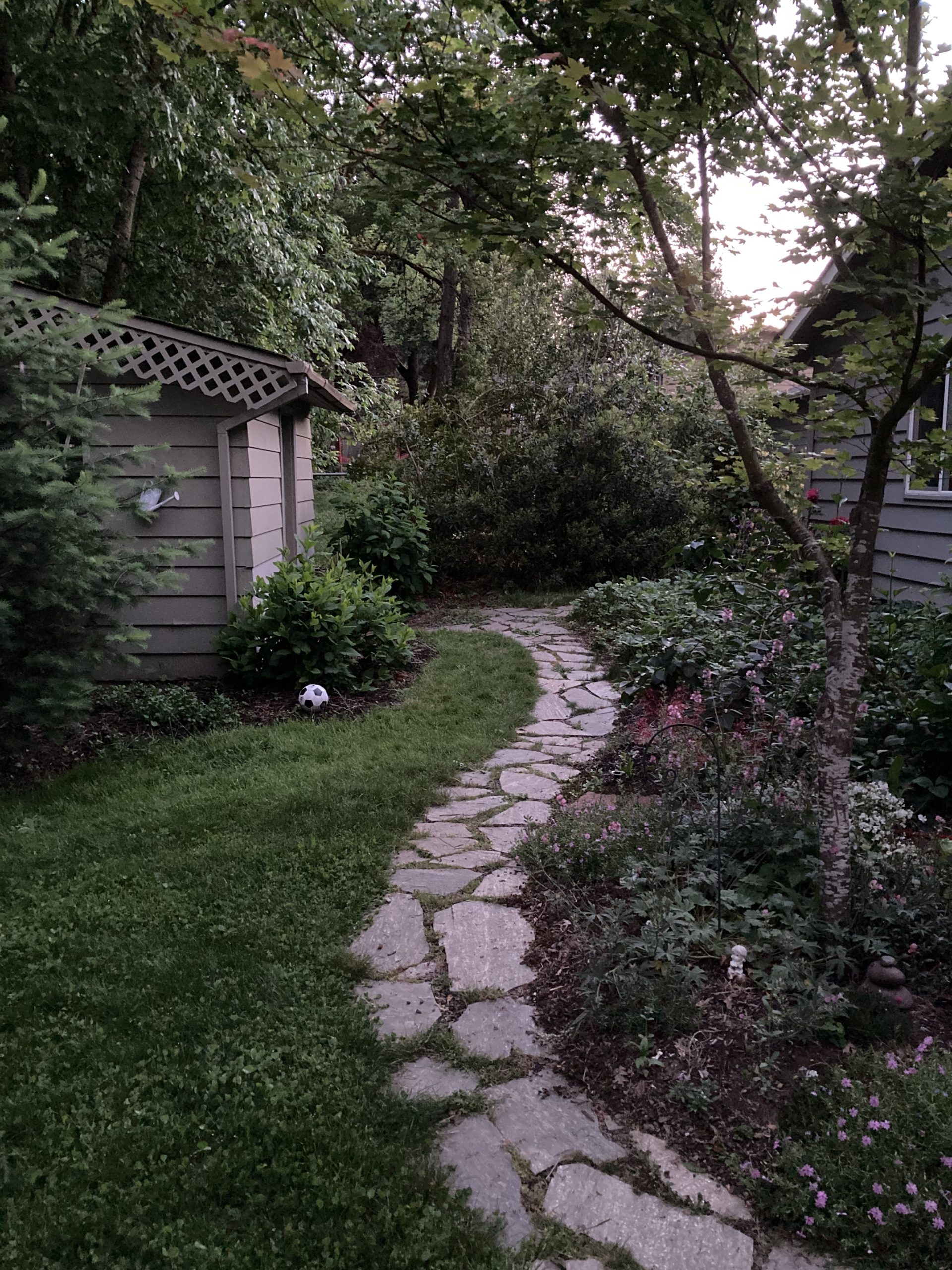Site Information: Gloria’s habitat in Tigard has full sun, part sun, and shade conditions, with soil conditions ranging from dry to moist

What inspired you to enroll in the Backyard Habitat Certification Program?
I’ve been working on native plant gardening for a while. Certification helped me know I was heading in the right direction.
How would you describe your habitat?
I have a rain garden in the front yard, and a bioswale on the downhill slope of my driveway. IPM is my natural gardening technique. My front yard is dry and sunny, and I’ve designed it as my meadow. In front of the house is deep shade. I have included a bug bath as part of the front yard. My backyard was sunny when we moved in, but we’ve added trees and a native plant hedgerow. It’s now quite shady. It also includes a bird bath and an area of native flowers and ferns under a vine maple and another area with two evergreen huckleberries. There’s also a rain garden. I have plans to add a small pond in the hopes of attracting frogs.

What are your top three favorite native plants and why do you love them?
That’s like asking who my favorite child is! My attachment changes depending on the time of year. In the spring I love the Inside Out Flower (Vancouveria hexandra) for it’s beautiful tiny flower and leaf shape. In the heat of the summer I love the Wooly sunflower (Eriophyllum lanatum) for it’s cheerful color and ability to thrive in the heat. In the fall, I love the asters because they fill in when so many other plants are tired out.
What changes have you observed as a result of creating habitat?
I have more birds visiting my yard. When I moved here it was a standard bare suburban grass yard with some sad arbor vitae ringing the property. I wondered where the birds were. Now I get a wide variety of birds visiting every day. Many neighbors walking by will chat with me about my garden when they see me working in it. I’ve made friends in the neighborhood who are also incorporating native plants in their landscaping.

What were the two most significant challenges you encountered while creating habitat, and how did you address them?
One of the biggest challenges was turning sterile grass with compacted clay soil into a rich growing medium. I used the layering method with cardboard and compost. Ten years later (and many more additions of compost), much of my soil is friable and shows evidence of rich life beneath the surface as well as above. The second challenge is one I continue to battle: noxious weeds. Blackberries and ivy creep in from the untended space behind me. Stinky Bob and shiny geranium also try to invade every year. I address the challenge with constant surveillance and hand pulling.
What resources did you find especially helpful?
I initially took several native plant courses through Metro, took the rain garden courses, have followed pretty much all the soil and water conservation districts on Facebook and take as many classes as I can from them. I have the Real Gardens Grow Natives book and the Portland Plant List is my go to resource for picking out the right plant for the right spot.
How do you enjoy your Backyard Habitat throughout the different seasons? What are its highlights in each season?
The emergence of new growth is a highlight in the spring. I love sitting on my deck or front porch and listening to the bird chatter or standing by my meadow and watching the bees visit different flowers. When the winter rains come, I enjoy watching things re-green after the late summer dormancy. In mid-winter, I like visiting the various plants and seeing what they are doing. It’s really fun to see emerging growth in the middle of winter.

What part of your backyard habitat are you most proud of?
I can’t think of anything I’m “most proud” of. I enjoy all of it and also want to continue to improve it.
Is there anything else you’d like to add about your journey?
It’s a continual learning experience. I started out just wanting to plant things that didn’t need a lot of water. That lead me to native plants, which lead me to learn more about the Willamette ecoregion and better appreciate this place I live. I’ve also deepened my appreciation for all the critters that are part of our ecosystem and that humans have a place there too.

